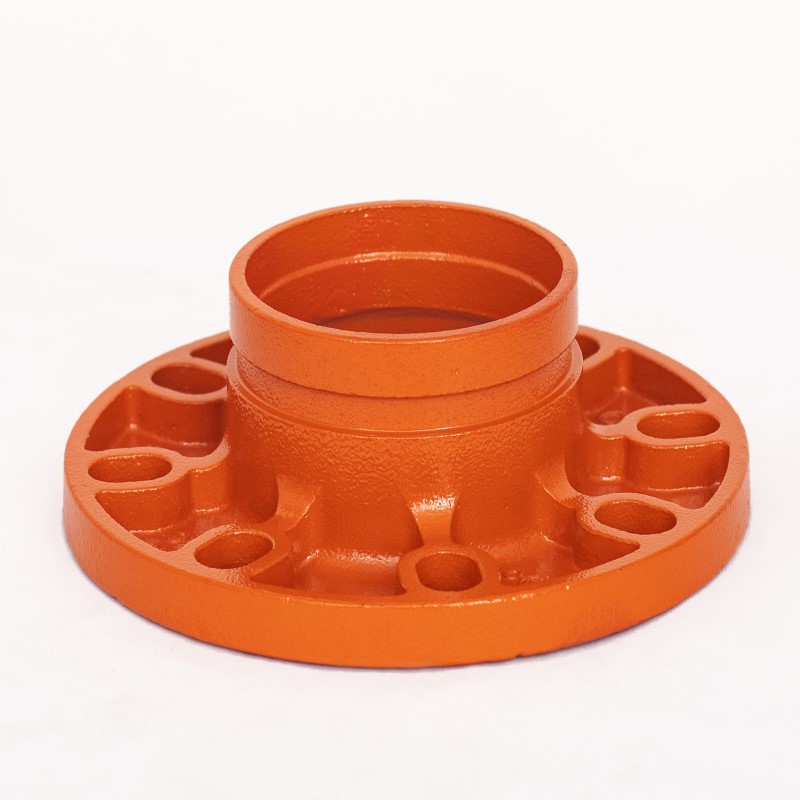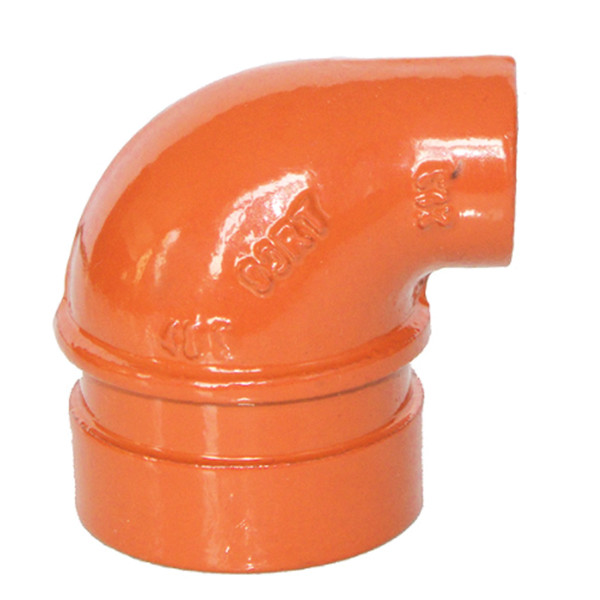ODM OEM Neck Flange Factories Pricelist – Flange Adaptor – DIKAI
ODM OEM Neck Flange Factories Pricelist – Flange Adaptor – DIKAI Detail:
Flange fittings are used in demanding applications due to their suitability to high pressure, shock, and vibration. They also allow for easy connections between hose and tube or pipe, as well as between rigid lines.
For tubing fittings that are larger than one inch in outside diameter, there are issues with both effective tightening and installation. Not only do these joints require larger wrenches, but workers must be able to apply the sufficient torque needed for proper tightening. Installation requires system designers to provide the space necessary for workers to be able to swing those larger-sized wrenches. If that wasn’t bad enough, the proper assembly of these fittings can be compromised due to the depleted strength and increased fatigue of workers trying to exert an applicable amount of torque. The split-flange fitting solves these issues.
Flange fittings have a high resistance to loosening, and can be assembled reasonably easily. These fittings are used in tight spaces. Currently, over 700 different sizes and configurations of split-flange fittings is available, making it very likely that one can be found for a specific application.
Split-flange fittings use rubber O-rings to seal joints and contain pressurized fluid. The O-ring sits in a groove on the flange, and then mates with a port’s flat surface. The flange is then attached to the port with four mounting bolts. The bolts tighten downward onto the clamps of the flange, thereby eliminating the need for large wrenches to connect the components of large-diameter tubing.
Elements of Split-Flange Fittings
Three elements must be in place for even the most basic of split-flange fittings. These are:
- An O-ring which fits into the flange’s end face groove;
- Two mating clamp halves with appropriate bolts for the connection between the split flange assembly and mating surface;
- A permanently connected flanged head, usually brazed or welded to the tube.
Tips for Effective Installation Using Split-Flange Fittings
When installing split-flange fittings, clean and smooth mating surfaces are a must. Otherwise, joints will leak. Inspecting joints for gouging, scratching and scoring can prevent future problems. It is important to note that rough surfaces will also contribute to the wear of O-rings.
In situations where perpendicular relationships are crucial, it must be ensured that each part meets the appropriate tolerances in order to prevent fluid from leaking through connections.
Although properly-designed split-flange assemblies see the flange shoulder protruding from 0.010 to 0.030 inches beyond the clamp face, no contact of clamp halves with the mating surface occurs.
Where the installation of flange connections is concerned, even torque must be applied on all four flange bolts. This will help avoid the creation of a gap which can cause o-ring extrusion once high pressure has been applied. As well, when tightening bolts, each must be tightened gradually and evenly using a cross pattern. It is not recommended to use air wrenches for this purpose, as pressure is not easily controlled and can result in the over-tightening of bolts.
Upward tipping of the flange can occur when only one of four bolts has been properly tightened. This can cause pinching of the O-ring. When this occurs, leaking at the joint is almost inevitable. Another scenario that can occur due to only one of four bolts being properly tightened is the bending of the bolts when all have been fully tightened. This happens when the flanges bend downward until they’ve bottomed on the port face, causing the bolts to bend outward. When bending of both flanges and bolts occurs, this can cause the flange to lift off the shoulder, causing joints to leak.
Product detail pictures:

Related Product Guide:
To meet the customers' over-expected pleasure , we have now our solid crew to supply our greatest all round assistance which includes marketing, sales, planning, production, top quality controlling, packing, warehousing and logistics for ODM OEM Neck Flange Factories Pricelist – Flange Adaptor – DIKAI , The product will supply to all over the world, such as: Adelaide, Mexico, Canada, With the development of the society and economy, our company will continue the "loyalty, dedication, efficiency, innovation" spirit of enterprise, and we will always adhere to the management idea of "would rather lose gold, do not lose customers heart". We will serve the domestic and foreign businessmen with sincere dedication, and let us create bright future together with you!
We are old friends, the company's product quality has been always very good and this time the price is also very cheap.



